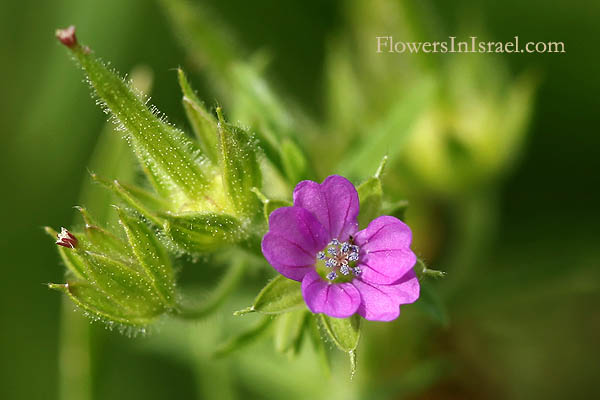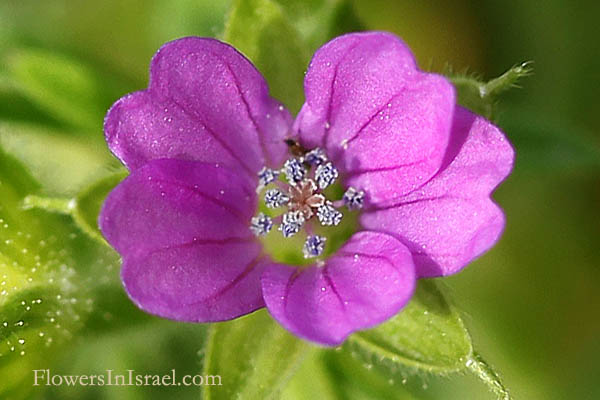Cut-leaved Crane's-bill, Wrinkle-seeded Crane's Bill,
Hebrew: גרניון גזור, Arabic: الغرنوقي المنقسم
| Scientific name: | Geranium dissectum L. | |
| Common name: | Red Cranesbill, Cutleaf geranium, Cut-leaved Crane's-bill, Wrinkle-seeded Crane's Bill | |
| Hebrew name: | גרניון גזור | |
| Arabic name: | الغرنوقي المنقسم | |
| Family: | Geraniaceae, גרניים |

Location: Netanya, the Dora rain pool |
| Life form: | Annual | |
| Stems: | 10-30 cm; ascending to erect; covered with backward-pointing, projecting hairs | |
| Leaves: | Alternate; petiolate, nearly circular in outline, deeply divided (palmatifid) with seven to nine lobes, smooth margin; rough hair on both surfaces, with pointy tips; veins impressed above, expressed below | |
| Inflorescence: | Terminal or axillary clusters of 2 stalked flowers | |
| Flowers: | Hermaphrodite; 5 violet pink petals, rounded or notched tip | |
| Fruits / pods: | Carpels, 5-segmented beaklike fruit; body 2–3 mm, minutely bristly; style column 12–15 mm; beak 2–3 mm; seeds deeply pitted, gray-brown | |
| Flowering Period: | February, March, April | |
| Habitat: | Humid habitats | |
| Distribution: | Mediterranean Woodlands and Shrublands, Semi-steppe shrublands | |
| Chorotype: | Med - Euro-Siberian | |
| Summer shedding: | Ephemeral |

Location: Netanya, the Dora rain pool Derivation of the botanical name: Geranium, from Greek γέρανος geranos, a crane; in allusion to the long beak of the carpels. dissectum, di, between, away from; seco to cut, cut off, cut up; divide, separate; dissected, as in leaves; finely cut. The Hebrew word: גרניון, geranion.
|